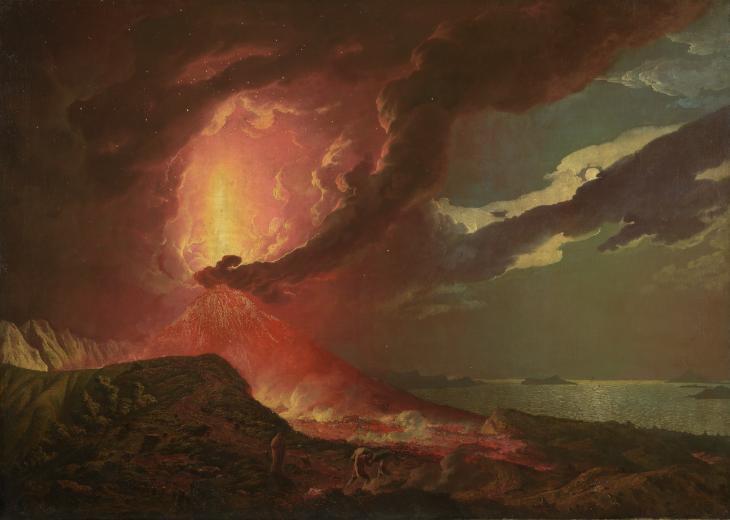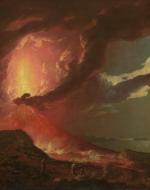Created by Cassandra Pecora on Thu, 12/02/2021 - 18:35
Description:
Joseph Wright of Derby’s painting, “Vesuvius in Eruption, with a View over the Islands in the
Bay of Naples” created in 1776, was inspired during his time in Italy from 1773-1775, where
Wright was constantly surrounded by extensive artistic inspiration. Wright’s inspiration for
“Vesuvius in Eruption” came from his time in Naples where he observed Mount Vesuvius.
Unfortunately, he never actually witnessed the remarkable volcanic eruption, thus his creation
depended greatly on his imagination (Tate, 1991). Wright expresses his inclination to illustrate
the contrast between light and darkness, specifically shown through the bright light of the
volcanic eruption and the darkness of the night sky. Wright uses oil-based paint, which he
brushes over a canvas to bring his creation together. The use of oil-based paint enhances the
colour depth of the painting, allowing Wright to merge and create a wide range of colours,
emphasizing the dramatic elements of his work. Wright’s painting of the erupting Mount
Vesuvius illustrates the contrast between violence and tranquility, along with the might of nature
and the frailness of humanity. Wright’s piece also explores the painful elements of the sublime
and distinctive elements of the picturesque within his work. Wright forces the audience to find
beauty in the destructive volcanic eruption, while also drawing attention to the power dynamic
between humanity and nature. Wright ultimately creates a piece that illustrates a combination of
chaos and tranquility, beauty and destruction, that overall formulates a truly remarkable piece of
artwork.
Key Words: Sublime, pain, destruction, beauty, tranquility, picturesque, painting, chaos, light, darkness, contrast, power, nature.
Copyright:
Associated Place(s)
Part of Group:
Featured in Exhibit:
Artist:
- Joseph Wright of Derby


